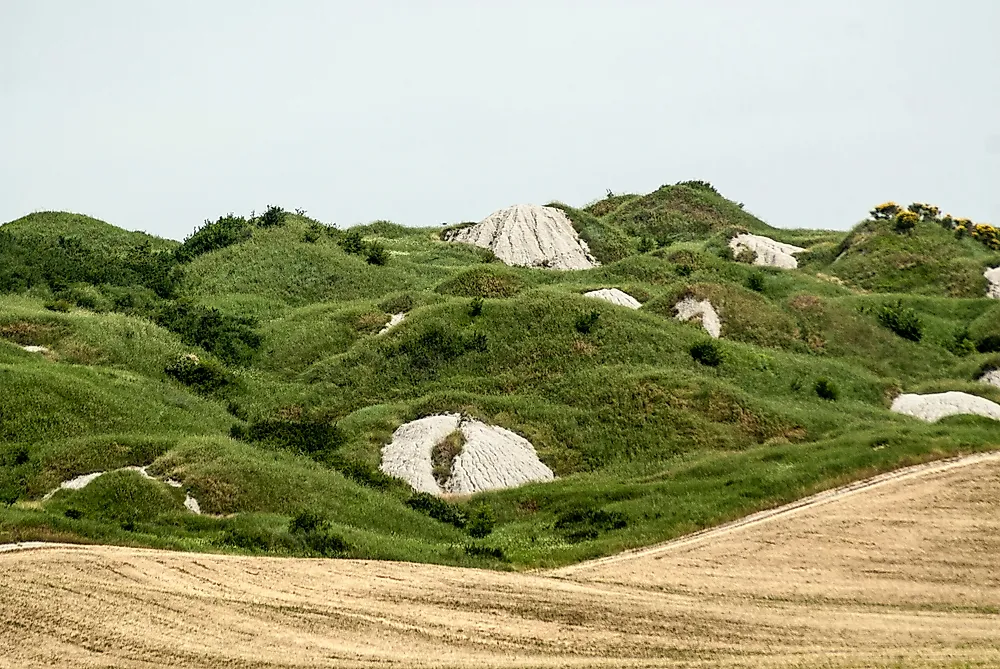Deserts of Europe

A desert is an arid ecosystem that receives fewer than 10 inches of precipitation annually. Desert ecosystems support little vegetation and animal life, as the conditions are extremely harsh. Deserts are formed through the weathering processes of rocks, prompted by large variations between day and night temperatures that cause the rocks to break into pieces. Deserts are common in every part of the world including Europe, although the continent is perceived to lack deserts since it is mainly associated with snow-capped peaks, green meadows, sweeping hills, luxurious beaches, and bustling cities. Europe has a combination of both true deserts and semi-deserts which are mainly found in Spain, Italy, Serbia, and Romania. The unique land formations and locations of these deserts and semi-deserts make them ideal tourist attractions in Europe.
Accona Desert, Italy
The Accona Desert is a semi-desert located in the Crete Senesi, near Tuscany Italy. As a semi-desert, precipitation in the Accona reaches highs of 24 inches per annum, which supports human and plant life. Cultivation is supported through large irrigation projects. The semi-arid region has unique land formations, including the medieval Abbey of Monte Oliveto Maggiore. The semi-desert features rare land formations of white and light color dome-shaped dunes that form stunning land attractions in Tuscany.
Oltenian Sahara Desert, Romani
The Oltenian Sahara is the largest desert in Europe and covers an area of more than 200,000 acres. It is located in the Oltenia region, which includes the area between the city of Calafat, Romania and the town of Dabuleni, Romania. The desert is not a natural land formation, as it resulted from significant deforestation in the 1960s which created vast sandy areas characterized by little precipitation. The name "Sahara" was incorporated by the press due to the expansive coverage of the desert. It is the only place in Europe that has an official sand museum. The government has introduced a tree-planting project to prevent further desertification and rehabilitate the desert so that it can support life.
Deliblato Sande, Serbia
The Deliblato Sands is the largest sand desert in Europe, covering a total of 300 square kilometers. The desert is located in the southeast part of the Pannonia Plains in Vojvodina, Serbia. The desert is a remnant of a prehistoric desert that was formed following the withdrawal of the Pannonian Sea, and it has a unique elliptical shape that was created during the Ice age period. The Deliblato Sands plays a key role in the biodiversity of Serbia, as it is home to 900 diverse plant species, some of which are endemic and therefore not found in any other parts of the world.
Tabernas Desert, Spain
Commonly referred to as the badlands of Spain, the Tabernas Desert is typically categorized as the only true desert in the mainland Europe. The Tabernas Desert is located in the province of Almeria, along the coast of Andalusia, and covers an area of more than 280 square kilometers. Extreme weather conditions such as temperatures exceeding 40 degrees celsius, which is the highest in Europe, are experienced during the summer. During the winter there is little precipitation and temperatures remain above the freezing point. The land is mostly barren and supports little animal and plant life. The desert is commonly used by cinema production crews as a filming location, especially for western films, given its resemblance to North America deserts.
The Highlands of Iceland
The Highlands of Iceland is a semi-desert located in Iceland. It is a unique formation, as it does not rely on sand and extreme temperatures to qualify as a desert. The volcanic soil synonymous with the plateau absorbs precipitation so quickly that it does not support any plant life, making it mostly uninhabitable.











